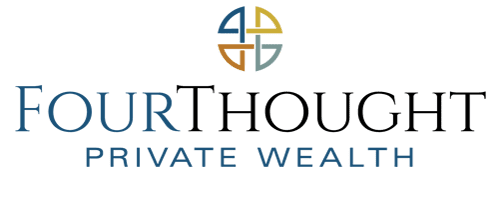Once upon a time, there were two sisters. Although the sisters were born ten years apart, they could have been mistaken for identical twins. They both worked hard for many years to build nest eggs for their retirement.
The Older Sister Retires with $1 Million to Invest
The older sister retired in 1989 with $1,000,000. She calculated that she could live on $60,000 per year. While doing research on investment strategies, she found that stocks had historically averaged a 10% return, while bonds and cash had averaged 5% and 3%, respectively. The elder sister thought to herself, “I need six percent, and stocks average ten percent– if I invest everything in the stock market, I will have four percent left over to cover emergencies and inflation.”
So, she invested her $1,000,000 of retirement savings in the stock market. Things worked out well for “big sis,” as the markets were great throughout the 1990s. The market averaged a 12% annual return, the elder sister withdrew $60,000 each year, and she ended the decade with a principal nest egg of more than $1,900,000.
Ten Years Later, The Younger Sister Retires with the Same Amount
The younger sister retired in 1999 with $1,000,000. She observed her older sister’s success, and asked, “Hey big sis, what should I do?” The eldest sister replied, “Do what I did—put your $1,000,000 in the S&P 500, take your $60,000 per year, and watch your wealth multiply.” So that is what the little sister did.
Things did not turn out so well for little sis. The younger sister invested her $1,000,000 in stocks right before the dot-com crash of 2000, 9/11, and the Enron/Worldcom scandals. After the Great Recession of 2007-2008, and only nine years into retirement, little sis had gone nearly bankrupt.
 These sisters had the same amount of money and used the same strategy, with the same long-term averages and withdrawal rates—yet they had radically different results. This story illustrates why it is imperative to structure a retirement plan around cash flow, personal goals, and the flexibility to adjust to the unknown. Do you think long-term averages provided solace to the younger sister and her family?
These sisters had the same amount of money and used the same strategy, with the same long-term averages and withdrawal rates—yet they had radically different results. This story illustrates why it is imperative to structure a retirement plan around cash flow, personal goals, and the flexibility to adjust to the unknown. Do you think long-term averages provided solace to the younger sister and her family?
Sequence risk is defined as the danger that the timing of withdrawals from a retirement account will have a negative impact on the overall rate of return available to the investor.
At FourThought Private Wealth, we describe it as “the risk of being forced to sell in a down market.”
For the younger sister to obtain her $60,000 of annual retirement income from 2000 through 2002, she was forced to sell her stock while it was priced at a 10 to 40 percent discount. Her retirement principal of $1,000,000 was severely diminished throughout the first few years of her retirement, and it was unable to recover.
The SWAN Approach to Mitigating Sequence Risk and Its Undesirable Consequences
Luckily for other people, there are a few strategies to mitigate this “risk of bad timing.”
The primary investment strategy we employ for our clients at FourThought Private Wealth who are at or nearing retirement is our “Sleep Well at Night” plan, or SWAN. The main goal of this strategy is to structure at least five years’ worth of retirement income, so they can sustain their quality of live without dependence on the ups and downs of Wall Street.
Our Plan for the Younger Sister
We answer the question “Am I going to be okay?” for our clients when we implement our investment plan. Imaging the younger sister is our client and she plans to retire in 2020, we will invest her lifetime savings in multinational, blue-chip, dividend-paying companies, paired with guaranteed, zero-coupon bonds laddered over the next five years. The dividends from large, sustainable companies—combined with five years of fixed income—provide confidence that, come hell or high water, little sis will have the income she needs throughout retirement to do the things that she wants to do.
Planning for the Next Flood
Our team operates on the belief that we are not gods and cannot predict the future—and also that a future “flood” is inevitable. Another pandemic, another recession, a war, or a global event that changes everything. We do not know when it will occur, who will cause it, and the form in which it will present. History has shown us this. What we know, however, is that cash flow will sustain your quality of life through the ups and downs and floods. Therefore, you must know where the cash is coming from before the flood happens. What’s more, you should not be tied to a computer managing your investments to answer the question, “Are my family and I going to be okay?”
